Water: How to Cope With a Water Crisis
12 minute read
Updated on: 08 May 2021
We’ve explored how to keep food on our plates in the face of climate change but how do we make sure everybody has access to clean, safe water? Only 3% of water on Earth is freshwater, the water we use to drink, stay clean, and water crops .
The majority of freshwater is actually used for agricultural (70%) and industrial purposes (19%) . Freshwater is one of the world’s most vital natural resources
and extreme changes in its availability have severe impacts on the health and wellbeing of both people
and wildlife
.
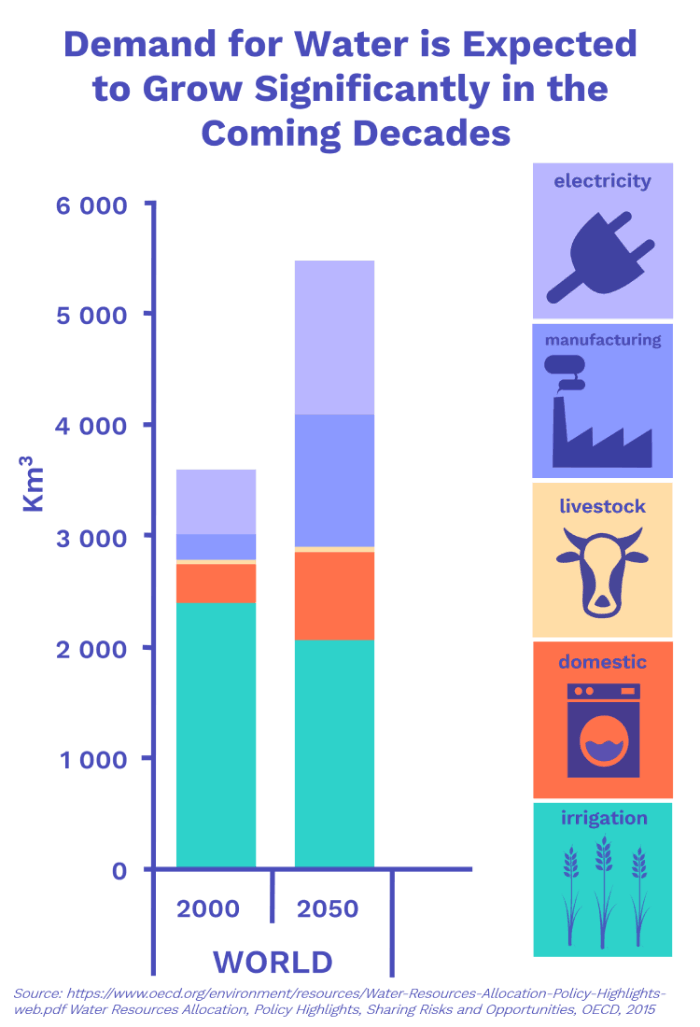
Global Water Demand
Moreover, when we think about the impacts of climate change - rising sea-levels, storms, floods, droughts, melting glaciers - you might start to recognise a watery (or more scientifically, ‘hydrological’) theme .
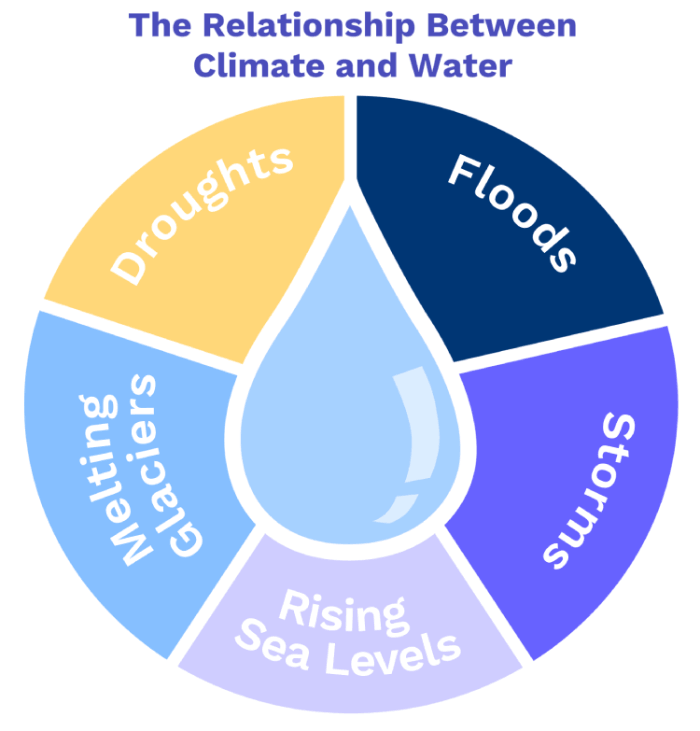
Effects of climate change on global water events
How does climate change affect the water cycle and availability of freshwater?
Freshwater is a renewable resource, meaning it replenishes on a regular basis . While water scarcity is largely driven by rapid population growth
, climate also has an influence on renewable water supplies
.
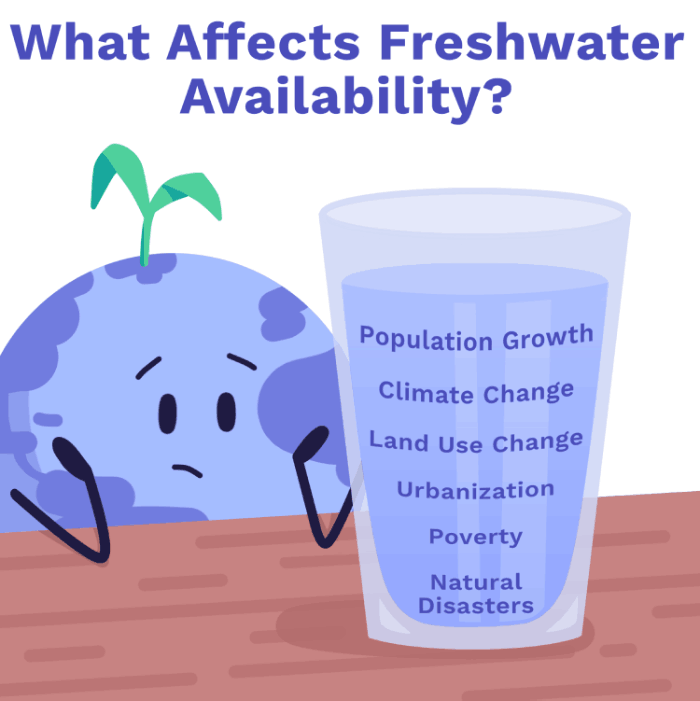
Risks to Freshwater Availability
Climate change is likely to make existing water shortages worse, particularly as we move from +2 to +4°C levels of warming . In fact, for every degree of global warming, 7% more of the world’s population could see 20% decreases in renewable water resources
.
Given that 74% of all natural disasters between 2001-2018 were water-related , water shortages are not our only concern. This is because climate change is expected to increase the likelihood of extreme hydrological events such as droughts, floods and cyclones
. One of the biggest threats to which we will have to adapt is sea-level rise. Compared to 1986-2005, average global sea-level is expected to rise between 0.43-0.84m by 2100
. If we decided not to adapt at all, sea-level rise could put 0.2-4.6% of the world’s population at risk of yearly flooding from 2100 and cost anywhere between 0.3-9.3% of GDP - that’s tens of billions of dollars
!
This might sound odd at first - how can we have both too little and too much water? Well, this is because under climate change wet areas will become wetter and dry areas will become drier . This means that the gap between freshwater demand and supply gets larger over time
, alongside shifts in the frequency and severity of hydrological events
.
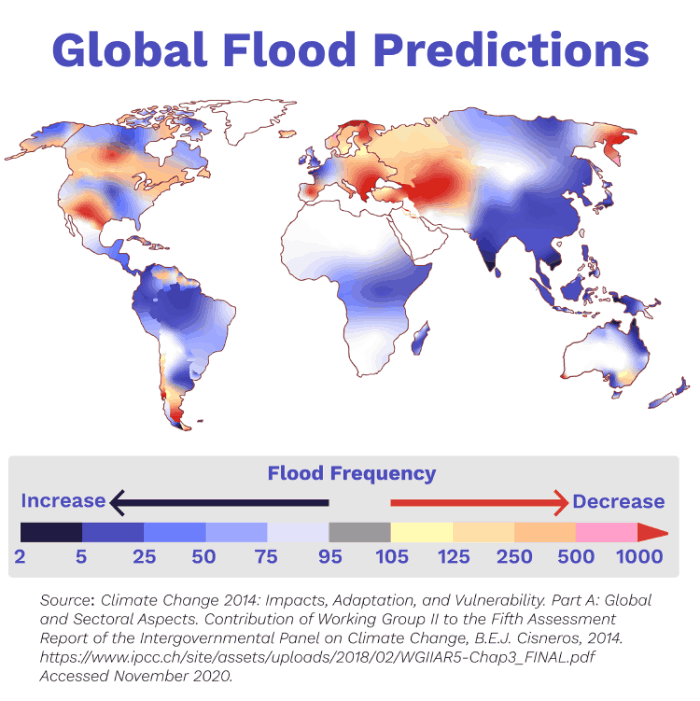
How will flood frequencies change?
How should we adapt to these changes and maintain our water supplies?
1. Water Management
To manage water sustainably, we need to rethink where our water comes from, how we transport it, and how we use it in day to day life .
Today, many countries rely on water supply networks to treat and transport fresh water to where it is needed . However, if we are to reduce our vulnerability to climate change, and get water to those in greatest need, we will need to update and expand these systems. For example, by simply fixing leaky water pipes we could prevent the loss of 20-30% of treated water
!
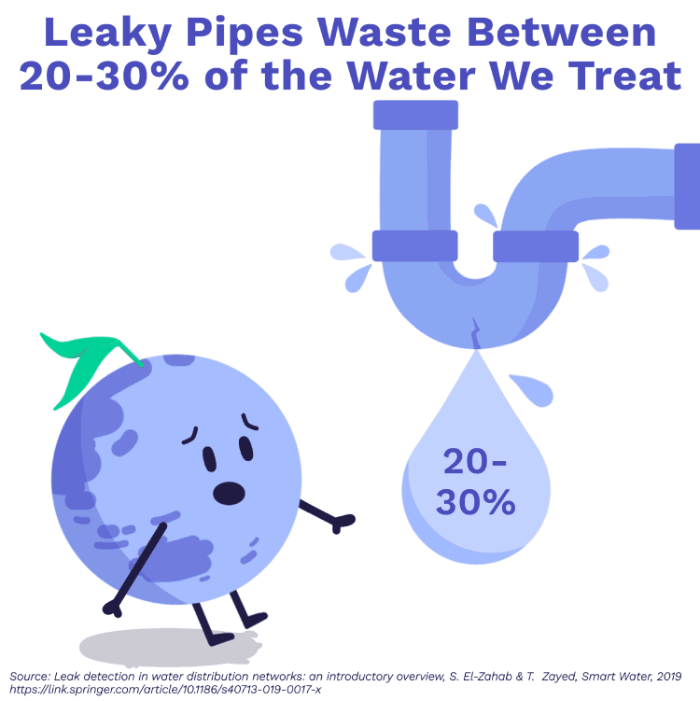
Fixing leaky pipes would save a lot of water
While 20 litres may sound like a lot, it’s nothing compared to the 15,400 litres required to make 1kg of beef . To combat water wastage, we can adapt by conserving and recycling water where possible, in both personal and industrial settings
. Where this is not enough, drought-prone regions may need to enforce rations on water use
, such as the 50 litres a day limit for Cape Town residents in 2018
.
When it comes to managing the natural landscape, projects like ‘Room for the River’ in the Netherlands have already begun adapting to rising river levels by building higher bridges, digging flood channels, and essentially allowing the river to flood in a controlled way . These large-scale adaptation projects need considerable funding, which often comes from local governments.
Funding can also come from an international level. In West Africa and the Sahel, more than 20 countries have come together to create the ‘Great Green Wall’ - an 8,000km long farmer-led reforestation project . The project aims to plant more vegetation and increase the ecological value of the Sahel, all the while combating the risk of prolonged drought
. As part of this, farmers have adapted by digging grids of planting pits which collect and store water through the dry season. Not only does this reduce the impact of water shortages, but it improves local crop yields and encourages the landscape to regenerate naturally
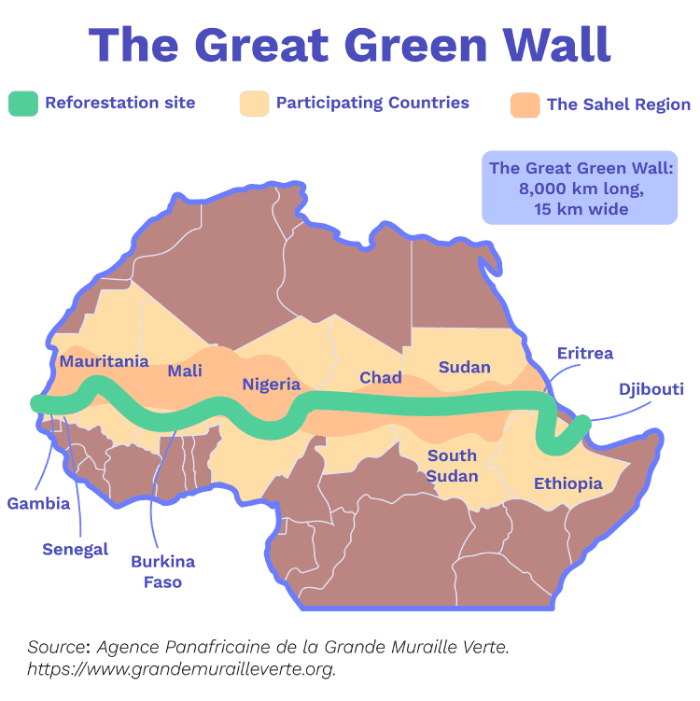
Adapting through reforestation
In this way, governments have a really important role when it comes to adaptation. Take a look at the graph below - it maps two different approaches to water allocation policy (i.e. the rules that determine who is able to use water resources and how, when and where this happens ) and the impact these policies could have on GDP in 2050
:
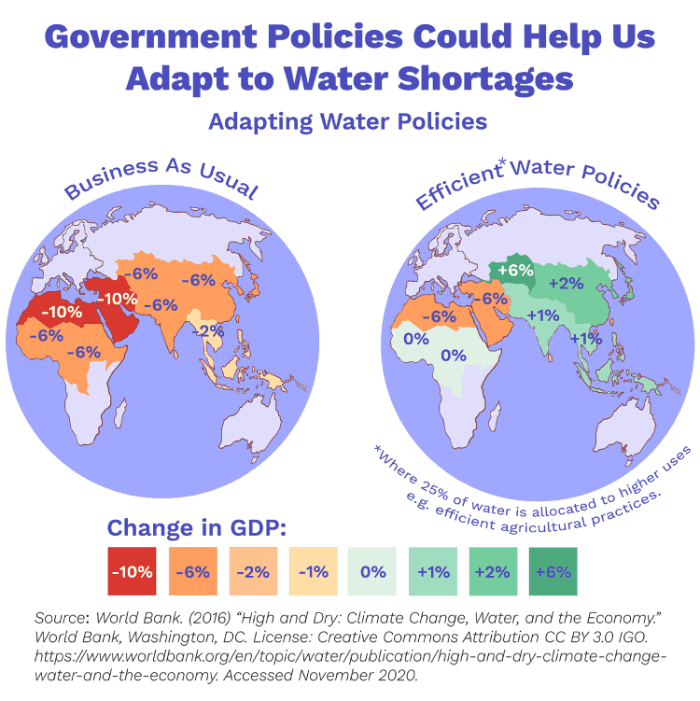
Government policies could help us adapt to water shortages
2. New technology and water sources
So far we have discussed access to the 3% of Earth’s water that is freshwater. But what if we could use technology to unlock the other 97%?
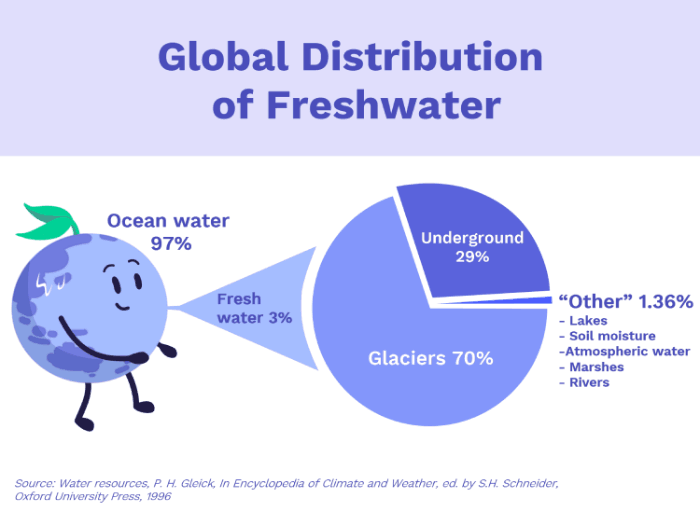
Freshwater
This 97% is very salty, so to use it we need to remove this salt. We do this through a process called ‘desalination’ . While desalination allows us to depend less on limited freshwater resources
, it is also costly and uses up a lot of energy
. We should also be wary of other environmental issues with desalination. For example, the pipes that take in seawater also suck up ocean life
, and the salty brine left after the desalination process can pollute marine habitats
. Desalination is therefore only favoured in areas where water is really scarce
, such as in Israel where the Sorek desalination plant provides 20% of local water demand
.
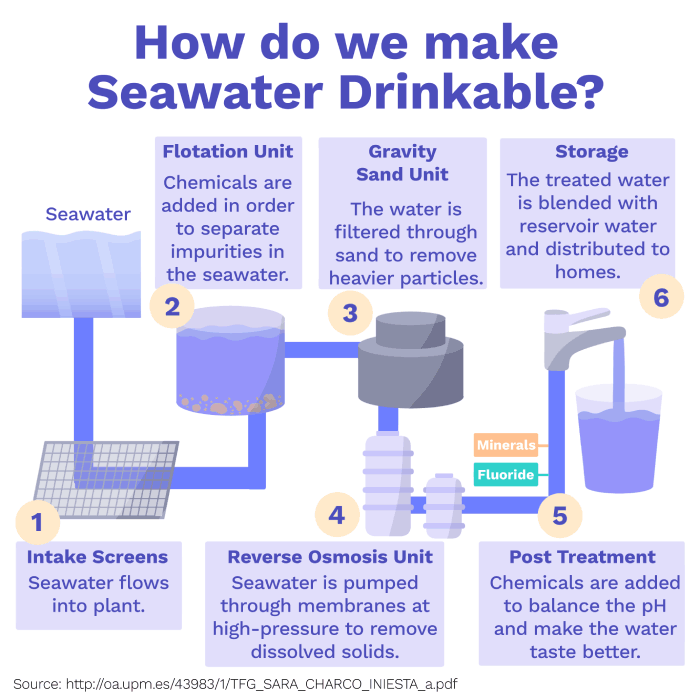
Desalination
Desalination isn’t the only technological solution to water scarcity. Other methods are even more weird and wonderful, like collecting water from fog or even transporting water via icebergs from Antarctica
. Although we haven’t quite got the hang of towing icebergs yet, locals in Northern India are creating their own artificial glaciers called ‘ice stupas’. These make up for shrinking glaciers and increasingly unreliable rainfall by providing an alternative source of water
.
We can also look to technology for low-cost tools to monitor water and accurately forecast and model changes in availability , from detailed maps of climate and geography to early warning systems that update us on the likelihood of floods or cyclones (EWS)
.
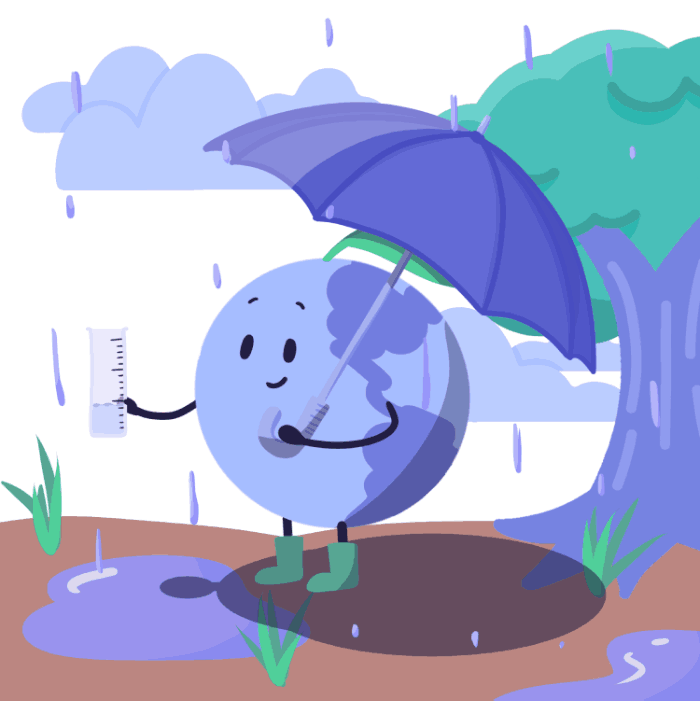
Predicting Natural Disasters.
As discussed earlier, infrastructure and urban planning are really important tools for water management . As well as updating what we already have, technological innovation will be important in these sectors too. Examples range from permeable pavements with pores that better absorb stormwater
to raising bridge heights
and even constructing typhoon-resistant houses where roofs are designed to withstand wind speeds of up to 180km per hour
.
In China, urban planners have taken this a step further and have essentially transformed entire cities into giant sponges, which either reuse or absorb 70% of stormwater . This is done by capturing rainwater in rooftop gardens, wetlands and special channels called bioswales before redirecting it for domestic or agricultural purposes
.
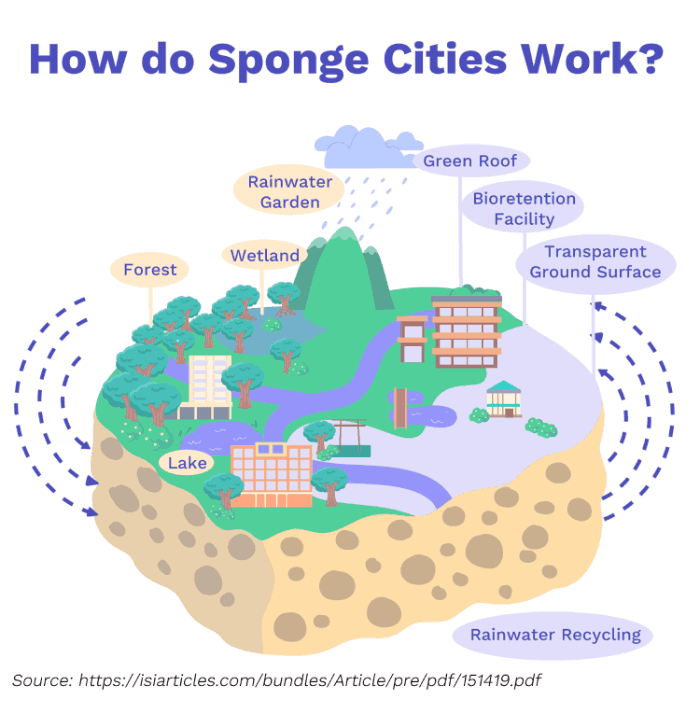
Cities designed to absorb large amounts of excess water
3. Nature-based solutions
Over the years, responses to hydrological threats have often favoured man-made, structural protections like levees, dams or sea walls. Whilst effective in the short-term, these can be expensive ; it cost the Netherlands a total of $9 billion just to cope with sea-level rise between 1960-2010
. Alternatively, we can take inspiration from nature to find more affordable and long-term solutions that help us cope with extreme hydrological events
.
The restoration of coastal habitats has proved a popular solution. Not only do these habitats provide physical protection against natural disasters (reducing wave height by an average of 35-71%
) but they also absorb and store carbon
, prevent the intrusion of saltwater on farmland
, and are home to a rich array of plants and animals
. Mangrove forests alone are thought to be worth more than $80 billion per year simply through their ability to protect coastal areas (and their 18 million human inhabitants) from flooding
.
Despite losing 35% of the world’s mangroves between 1980-2000 , evidence continues to show that the benefits of having healthy mangrove forests are 10 times higher than the costs of maintaining them
and 2 to 5 times cheaper than man-made coastal defences
.
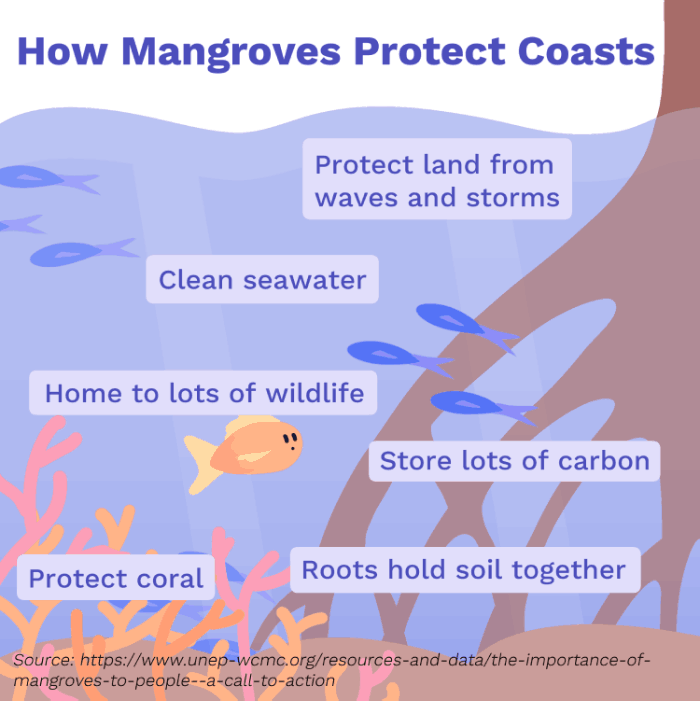
Benefits of Mangroves
It’s not just mangroves either; it turns out that trees in general are an important part of the water cycle because they increase the rate at which rainwater enters the soil, thereby reducing flood risk .
In fact, everything from tiny insect larvae to beavers and wolves can alter the shape and flow of river systems
! These species are essentially natural engineers. Although beavers are particularly well-known for reducing the effects of river erosion and flash-floods
, not everybody is happy about their reintroduction as they have been known to cut down too many trees and dig up lots of soil if left unchecked
.
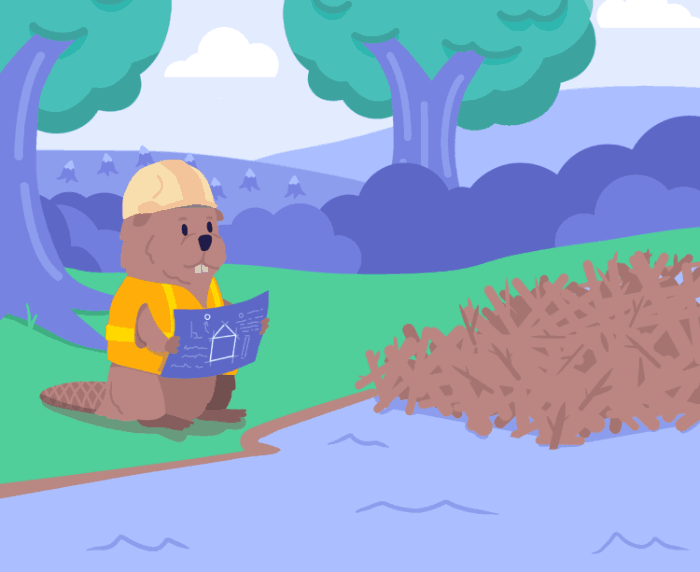
Ecosystem engineers can be found all over the place
Conclusion
Sustainable management of water resources needs to be a top priority if we want to avoid the water crises of the future. Successful adaptation will require large-scale investment in sustainable water systems and infrastructure , improving water-use efficiency and making the most of new information and technologies
. This will most likely happen through a mix of engineered and natural solutions, as well as regulatory decisions made by water management bodies
.